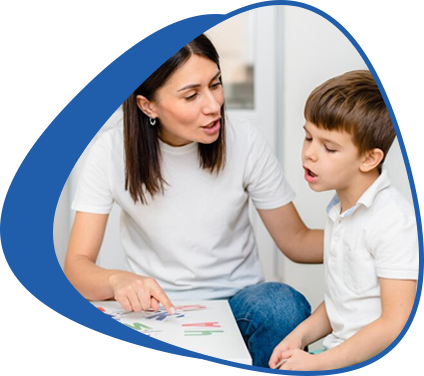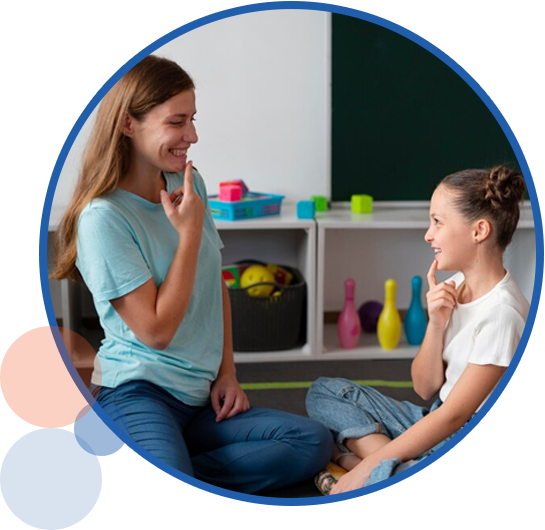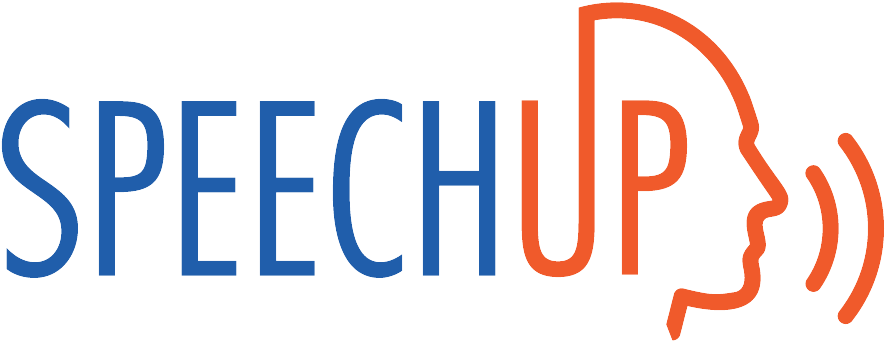ONLINE SPEECH THERAPY
Therapy for Apraxia of Speech in Adults
Convenient & Effective Speech Therapy


APRAXIA OF SPEECH
What is apraxia?
Apraxia is a motor speech disorder that makes it hard for people to plan and coordinate the movements needed for speaking. This means that individuals with apraxia might struggle to control their tongue, lips, jaw, and other speech muscles, leading to speech that can be slow, effortful, or distorted.
Unlike some other speech disorders, apraxia often involves inconsistent errors. This means a person might have trouble making sounds or words correctly, and they might substitute one sound or word for another. There are two main types of apraxia:
Acquired Apraxia of Speech: This type usually occurs after a significant event like a stroke, traumatic brain injury, or other brain damage.
Childhood Apraxia of Speech: This is typically diagnosed in children and may have no clear cause. It can also be associated with developmental disorders such as autism or cerebral palsy.
APRAXIA SPEECH THERAPY GOALS
How a speech-language pathologist can help with apraxia?
A speech-language pathologist can support individuals with both childhood and acquired apraxia of speech in various ways:
Assessment and Diagnosis: They evaluate and diagnose both types of apraxia through standardized assessments and observations.
Treatment Planning: They develop a customized treatment plan based on the individual’s background and assessment results.
Treatment Strategies: They introduce and implement effective strategies to integrate into the individual’s daily life.
For childhood apraxia of speech, treatment may be adapted to suit younger children and keep them engaged. This might include:
Oral Exercises: Exercises to strengthen and coordinate mouth muscles.
Consonant Production: Focus on consistent production of consonant sounds and training or retraining the articulators.
Emotional Impact: Addressing how apraxia affects the child’s daily life and setting goals around their personal experiences.
Alternative Communication: Exploring and discussing other forms of communication if needed.
APRAXIA SPEECH THERAPY METHODS
What methods are used to treat apraxia?
There are several ways to treat both acquired apraxia of speech and childhood apraxia of speech, and the approaches are quite similar. However, treatments for childhood apraxia are often customized to make them more engaging and understandable for kids. Here are some common methods:
Speech Sound Drills: Apraxia of speech can affect both consonants and vowels. Practicing these sounds repeatedly can help individuals learn or relearn how to produce them correctly and improve the muscle memory needed for speech.
Motor Exercises: These exercises are used to address various motor speech disorders, including dysarthria. They help retrain and strengthen the muscles involved in speech, improving coordination even when there isn’t significant weakness.
Alternative Communication Methods: In severe cases of apraxia, learning other ways to communicate may be necessary. This could involve using communication boards or electronic devices, with guidance from a speech-language pathologist to help with the learning process.
APRAXIA OF SPEECH EVALUATION
How is apraxia of speech diagnosed?
Diagnosing apraxia of speech usually involves a combination of standardized tests and observations by a speech-language pathologist (SLP). Here’s how it typically works:
Background Check: The SLP will start by gathering background information. This includes the person’s medical history and, for children, their developmental milestones. They might ask when the speech issues first appeared and whether they followed an event like a stroke or if they were present from early childhood.
Speech Production Evaluation: The SLP will observe how the person produces speech sounds. They use standardized tests to assess this, looking at things like how well the individual articulates sounds and whether there are any physical signs of difficulty, such as groping or incoordination.
Error Analysis: The SLP will examine the types of speech errors the person makes. This helps determine the kind of apraxia present and guides which areas need focus during therapy.
In short, diagnosing apraxia of speech involves a detailed evaluation of speech production and may include working with other professionals to rule out other conditions.
APRAXIA OF SPEECH TREATMENT
How is apraxia of speech treated?
When it comes to treating apraxia of speech—whether it’s acquired or childhood—there are a few key approaches that can help. While treatments for childhood apraxia may be tailored for younger patients, they share similarities with those for acquired apraxia. Here’s a breakdown of some common treatment options:
Sound Drills: These focus on getting the speech sounds right. Through repetitive practice, individuals learn or relearn how to produce the correct sounds.
Rate of Speech: People with apraxia often struggle with speaking too fast or too slowly. Treatment helps them find and practice a more natural and manageable speaking rate.
Tactile Cues: This method involves using touch to guide speech production. By physically touching the articulators (like the tongue or lips), individuals get cues on how to position them for correct sound production.
Visual Cues: Using tools like mirrors, this approach lets individuals see how they’re producing sounds. By observing their own speech movements, they can better understand and correct their production.

